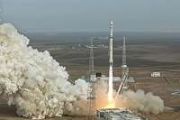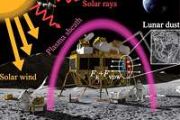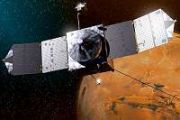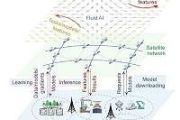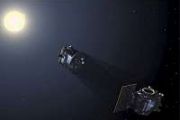
Copernical Team
NASA team presses MAVEN recovery before Mars solar conjunction
 NASA engineers continue attempts to regain contact with the MAVEN Mars orbiter, which last communicated with Earth on Dec. 6. Working with the Deep Space Network, the team is uplinking recovery commands and listening for any signal that would confirm the spacecraft has resumed communications.
Specialists are processing fragments of tracking data captured on Dec. 6 during a radio science ca
NASA engineers continue attempts to regain contact with the MAVEN Mars orbiter, which last communicated with Earth on Dec. 6. Working with the Deep Space Network, the team is uplinking recovery commands and listening for any signal that would confirm the spacecraft has resumed communications.
Specialists are processing fragments of tracking data captured on Dec. 6 during a radio science ca Lunar dust model maps how charged grains stick to spacecraft
 Researchers from Beijing Institute of Technology, China Academy of Space Technology, and the Chinese Academy of Sciences have developed a theoretical model that links electrostatic forces and contact mechanics to describe how low-velocity charged lunar dust particles either adhere to or escape from spacecraft surfaces within a surrounding plasma sheath. The work aims to clarify mechanisms that d
Researchers from Beijing Institute of Technology, China Academy of Space Technology, and the Chinese Academy of Sciences have developed a theoretical model that links electrostatic forces and contact mechanics to describe how low-velocity charged lunar dust particles either adhere to or escape from spacecraft surfaces within a surrounding plasma sheath. The work aims to clarify mechanisms that d Curiosity Blog, Sols 4750-4762: See You on the Other Side of the Sun
 As we all prepare for the holiday season here on Earth, we have been planning a few last activities before Curiosity and the team of scientists and engineers take a well-deserved, extended break. This holiday season coincides with conjunction - every two years, because of their different orbits, Earth and Mars are obstructed from one another by the Sun; this one will last from Dec. 27 to Jan. 20
As we all prepare for the holiday season here on Earth, we have been planning a few last activities before Curiosity and the team of scientists and engineers take a well-deserved, extended break. This holiday season coincides with conjunction - every two years, because of their different orbits, Earth and Mars are obstructed from one another by the Sun; this one will last from Dec. 27 to Jan. 20 China debuts Long March 12A reusable rocket in Jiuquan test flight
 China conducted the debut flight of the Long March 12A carrier rocket on Tuesday, with the launch mission succeeding while the recovery attempt ended in failure.
A 70.4-meter-high Long March 12A, the tallest space vehicle China has ever built, blasted off at 10 am from a newly constructed service tower at the Jiuquan Satellite Launch Center in the Inner Mongolia autonomous region.
Af
China conducted the debut flight of the Long March 12A carrier rocket on Tuesday, with the launch mission succeeding while the recovery attempt ended in failure.
A 70.4-meter-high Long March 12A, the tallest space vehicle China has ever built, blasted off at 10 am from a newly constructed service tower at the Jiuquan Satellite Launch Center in the Inner Mongolia autonomous region.
Af AI systems proposed to boost launch cadence reliability and traffic management
 The global space sector is entering a phase of large-scale satellite constellations and expanded human lunar activity, driving a sharp increase in demand for access to orbit. Within the next two decades, the total mass launched to space is expected to reach several hundred thousand tons, with annual launch counts projected in the tens of thousands and continuing to grow. Launch providers therefo
The global space sector is entering a phase of large-scale satellite constellations and expanded human lunar activity, driving a sharp increase in demand for access to orbit. Within the next two decades, the total mass launched to space is expected to reach several hundred thousand tons, with annual launch counts projected in the tens of thousands and continuing to grow. Launch providers therefo Fly through Webb’s cosmic vistas
 Video:
00:43:26
Video:
00:43:26
On the launch anniversary of the NASA/ESA/CSA James Webb Space Telescope, ESA presents a unique compilation of zooms into stunning cosmic views.
So embark on a special journey: as if aboard a virtual spaceship, this video will take you through interstellar dives into the rich realm of our Universe. We will visit colourful nebulas and dynamic star nurseries in our own galaxy. Then venture beyond, to travel to the distant reaches of the cosmos and marvel at interacting galaxies and huge galaxy clusters.
The largest space telescope ever, Webb was launched on Christmas Day in 2021, on an
SpaceX defends airspace safety ahead of Florida Starship launch plans
Verifying that you are not a bot
Meet NASA's Artemis Closeout Crew, tasked with securing astronauts in their spacecraft
Verifying that you are not a bot
Russia's plans for a space station include 'recycling' its ISS modules
Verifying that you are not a bot
Engineering the first reusable launchpads on the moon
Verifying that you are not a bot


